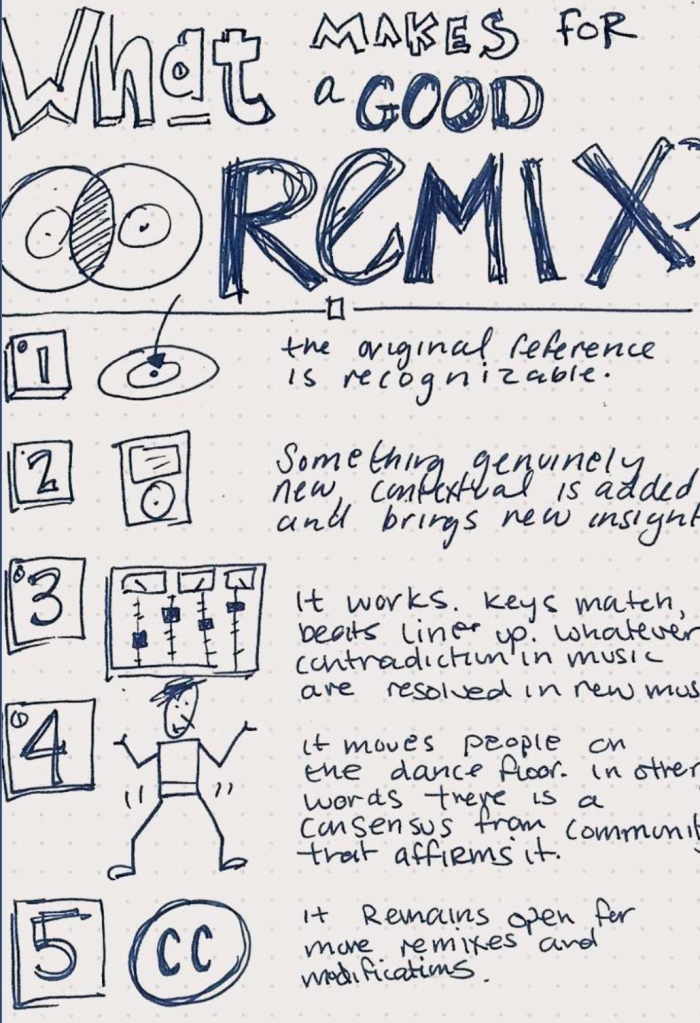Sketchnote: What Makes for a Good Remix?

What makes for a good remix? What makes for a bad one? When is a remix not a remix but a cover or a something more “original?”
These are questions that come up a lot when I present on themes related to the Convergent Model of Renewal. When I think about how traditions can be revitalized or “remixed” within new cultures people genuinely want to know if there are ways that the “new” thing is no longer a part of the old? Are there ways that we can identify if the remix really is good?
Here are five things I believe make for good remixes. We need to adapt this further into communities and renewal work, but I think looking at it from this perspective can help get us part of the way there.
- The original piece of art, sample, text, etc. is recognizable. The connection or reference to what the remix is drawing on is accessible those within that particular community.
- There is genuinely something new about the remix. It is clear that it is original in some way. And this originality often leverages the past, while shedding new light or a new perspective on the old in a truly innovative way.
- It works. Everything fits together in a new seamless production. There is a big difference between Lee Major in the “Six Million Dollar Man” and Frankenstein. The keys match, the beats line up. Whatever contradictions may have previously existed they are resolved within the new piece of art.
- It is participatory: it moves people on the dance floor. Another way to say this is that it is affirmed, as well as created, through a consensus process within the community that is directly affected by the remix. The community is invested in the outcome of what is created.
- It remains open to more remixes and modifications. It would be both tragic and ironic if a remix became proprietary, dogmatic and restricted under copyright. What is created through an open-ended process must seek to affirm further developments, remixes and new ways of sampling.